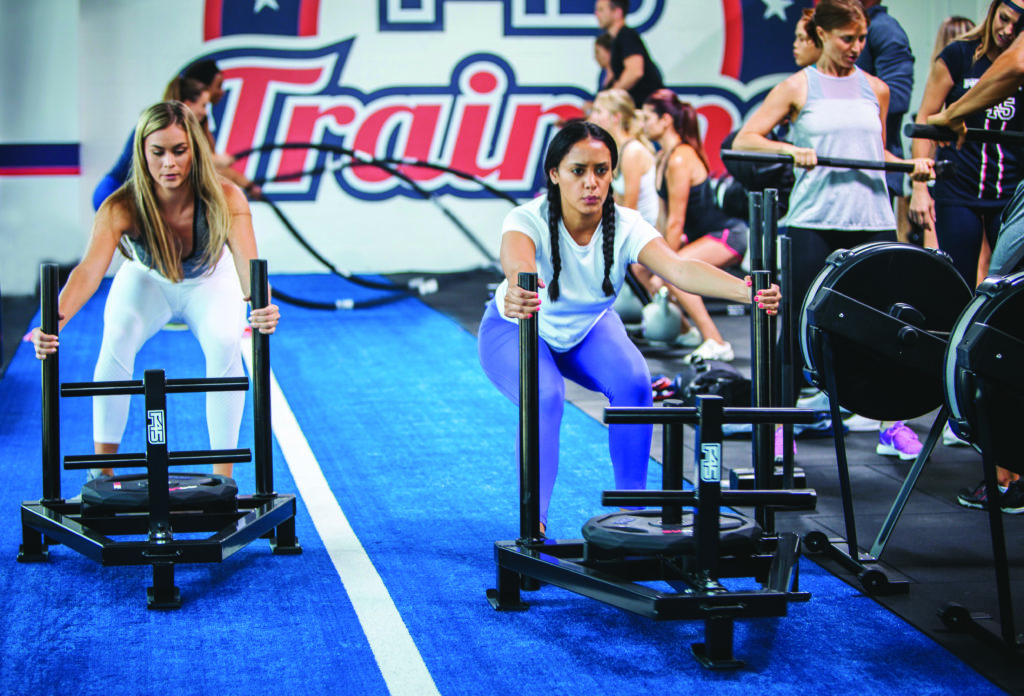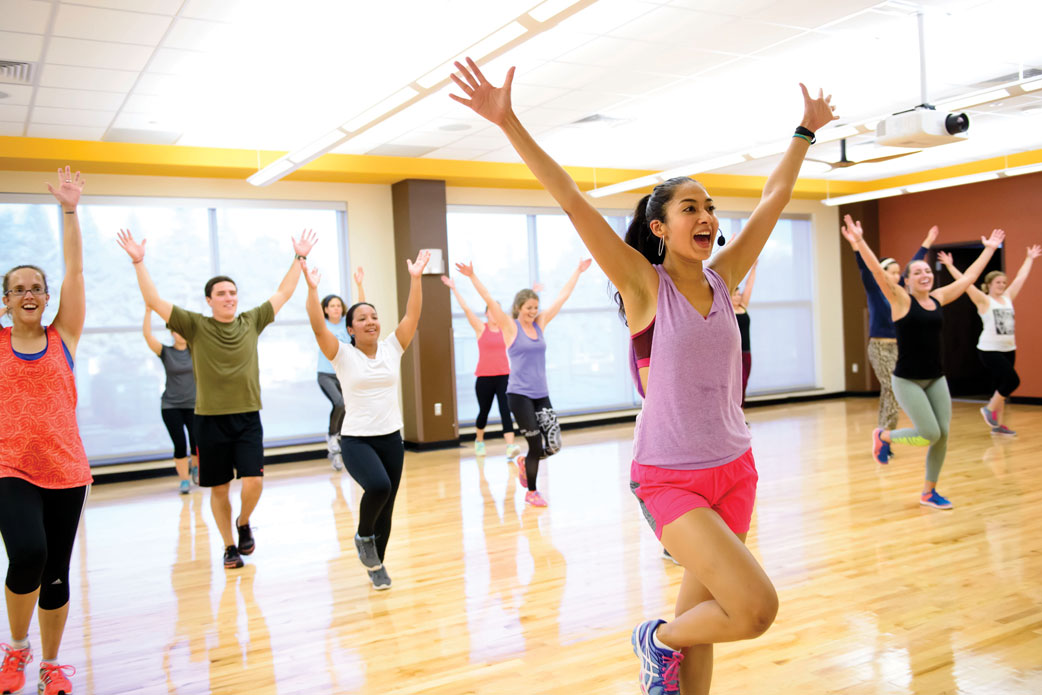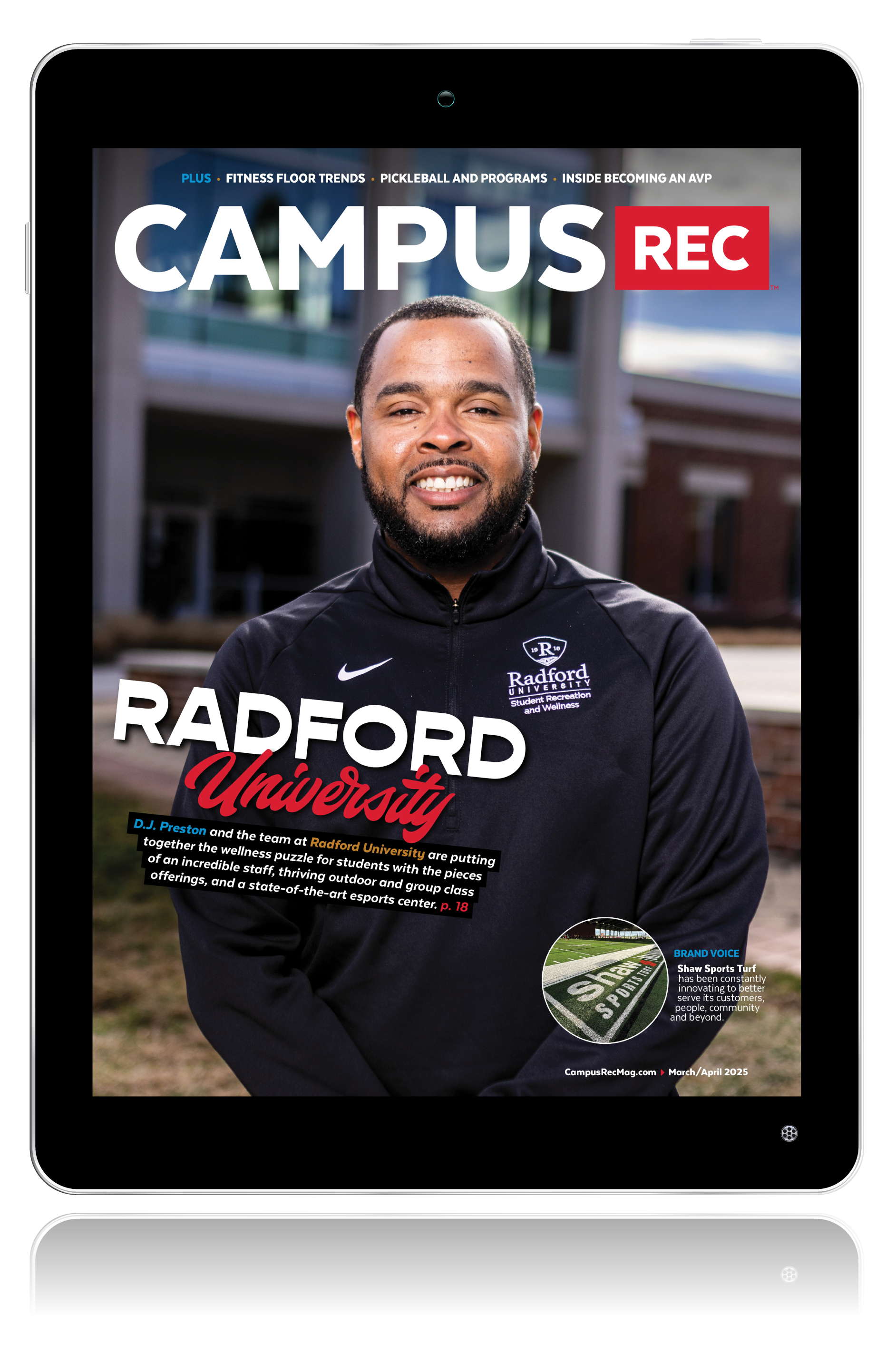The development of technology continues to improve the rate of immediate gratification, and the fitness industry is no stranger to this demand. The use of virtual on-demand classes and wearable tech that provides instant feedback are what busy students expect to see in their rec centers, along with emerging mobile apps that allow them to schedule fitness classes ahead of time.
“I believe with a demographic that gets a large personal reward from instant gratification and rating systems, it is important to offer technology services to meet that need,” said Eli Barrett, the assistant director of recreational facilities and membership services at Colgate University. “For virtual or on-demand workouts, these also are very beneficial because they give the community more flexibility.”

The term flexibility is not only used in yoga classes on campus anymore — it’s now the name of the game for students involved in numerous activities who also want to stay on top of their health and fitness goals. William Craig, the assistant director of fitness, wellness and recreation at North Carolina State University, understood and met this need for his students through the opening of an F45 Training Studio.
F45 is a workout that merges high-intensity interval training with technology through daily broadcasted workouts. “The incorporation of this technology results in an entirely new experience for the users and is a game changer in the amount of variety that can be offered in a workout,” said Craig.
The perks of this on-demand class not only include the number of exercises available, but it also provides the instructors in the videos with the ability to explain and teach throughout the workout. “This leads to a more dynamic and engaging experience,” explained Craig. “The use of technology to lead fitness programming will only increase over time and will provide additional flexibility and variety in workouts unlike we have seen in the past.”
Other types of popular virtual fitness include cycling. The Expresso Bikes used at Colgate University provide guided rides to encourage engagement. “Ultimately, it is important to reduce the number of barriers between a person who would sit on a couch and coming to the gym,” said Barrett. “Videos and virtual workouts help people feel more confident about their form, workout routine, and more without being limited by financial barriers or fear of judgment.”
Wearable technology has been around and continues to gain popularity due to the growing social interaction it now sustains. “Wearable technology and social fitness like Myzone allow for students, faculty and staff to stay more engaged with fitness,” said Barrett. “This starts to build a stronger community based around wellness. Having a common denominator opens doors for people to connect and interact with each other.”
Another type of time-saving tech interaction is the use of mobile apps. One of the leading campus rec apps, the University of Wyoming’s (UW) campus rec app, began with picking a management software program to help run their 60-plus fitness classes a week — the best fit was FitDEGREE.
“We can post the schedule, special events, make announcements, send notifications, track our participation counts and much more,” said Sarah Luke, the assistant director of operations for campus recreation at UW. “We have more control and flexibility for our group fitness program by using the app than ever before.”

The mobile app has been most beneficial for UW by being able to track participation in classes. It has also eliminated the issue of too-full classes by enabling participants to remotely register 48 hours prior. Since the classes are capped, another added benefit includes a waitlist feature which sends notifications if a spot in class opens up. Plus, there is an announcement feature for events, opportunities and changes to schedules.
A mobile app not only benefits participants of classes, but also provides valuable and helpful information to class instructors and administrators. “As an instructor, the admin interface is easy to use, and helps instructors plan ahead and get to know their participants on a personal level,” said Luke. “As an administrator, the app gives better, more reliable program numbers, allows participants to register ahead of time, and generates a waitlist, thereby solving all of our original challenges. Now we have much more valuable information about our patrons and our classes.”
When asked where he sees the future of fitness technology going, Barrett responded with a vision of lots of screens with lots of options.
“I think functional training spaces will have a rack system with a screen that has a database of workouts to choose from and corrective form videos to educate patrons,” he said. “Although I think there will always be a social wellness need of personal trainers and fitness instructors, I believe a virtual trainer and class systems will be more available in open spaces because it gives patrons more accessibility.”
Ultimately, it’s about staying on top of trends. And since it’s not necessarily cheap, it’s always important to research and plan budgets. “See what choice best fits your population, space and fitness needs — consider the annual and start-up fees for implementing these companies into your facilities,” said Barrett.










